Fall Armyworms: 10 Effective Ways to Control and Prevent Them
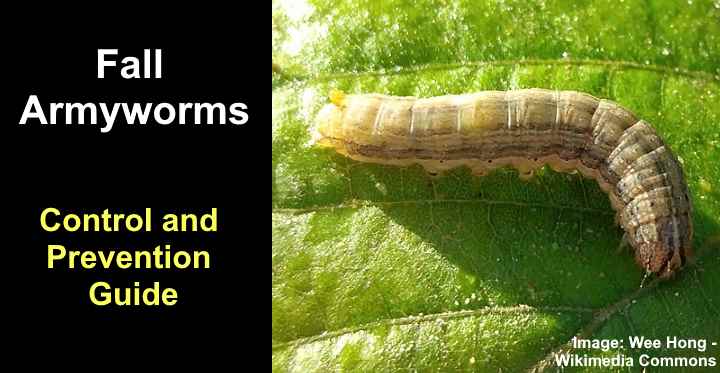
Fall armyworms can have a devastating impact on your lawn. These large, destructive, brown-striped caterpillars eat through plant tissue, damaging grass and causing brown patches to appear. These caterpillars are the larval stages of moths, and they damage lawns, pastures, and hayfields throughout the tropical regions of the western hemisphere from the United States to Argentina.
Armyworms are a significant pest for farmers and gardeners across North America. These invasive caterpillars have a voracious appetite and can cause considerable damage and defoliation, particularly when present in large numbers. As their name suggests, fall armyworms are a pesky nuisance from late August through fall until the first frost.
Fall armyworm control and prevention requires an integrated pest management strategy. It’s vital to scout lawns for eggs and emerging larvae. Also, using natural pest control solutions like neem oil and insecticidal soap can help kill fall armyworms. Additionally, beneficial insects and nematodes can help control fall armyworm populations.
This article is a comprehensive guide to fall armyworm control and prevention. You will learn about the life cycle of armyworms and the best way to eradicate these brown caterpillars.
What is a Fall Armyworm (Spodoptera frugiperda)?
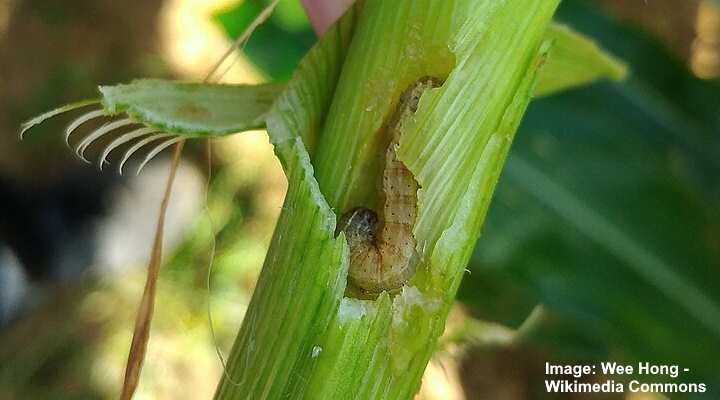
Fall armyworm in a stalk of a corn plant
The fall armyworm caterpillar is a destructive pest that destroys lawns and crops. It’s the larval stage of the moth Spodoptera frugiperda. The agricultural pest feeds on plant matter, especially grasses and corn. Fall armyworms overwinter successfully in the United States only in southern Florida and southern Texas. The grayish-brown adult moths are strong fliers and can spread as far north as Canada.
Fall armyworms belong to the insect order Lepidoptera and family Noctuidae. They are generally most active during the early morning, late afternoon, and early evening. However, they can also be observed feeding on foliage throughout the day, particularly on taller, unmowed grass.
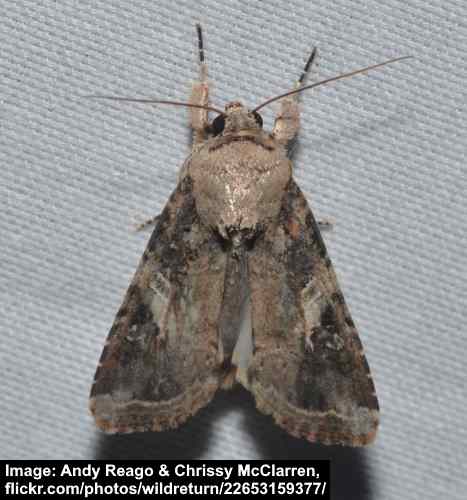
Spodoptera frugiperda moth
What Do Fall Armyworms Look Like
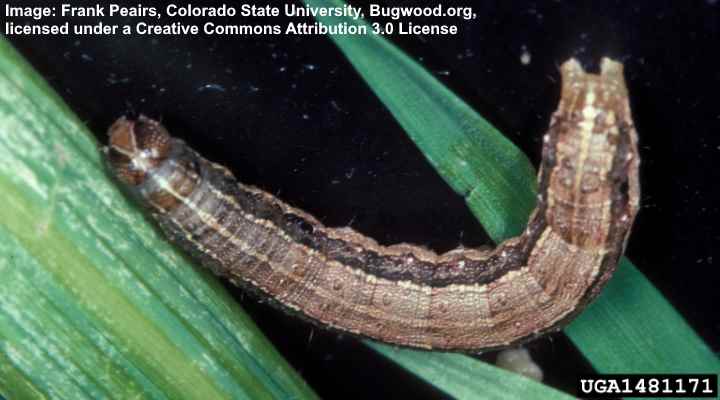
Fall Armyworms (Spodoptera frugiperda)
Fall armyworms have a cylindrical, mottled brown body with a distinct black or dark brown stripe on each side. The mature caterpillar has black spots and spines the length of its body. A distinguishing feature is a prominent inverted “Y” shape on its head. Fall armyworm caterpillars grow 1” to 1.5” (25 – 28 mm) long.
Fall Armyworm Life Cycle
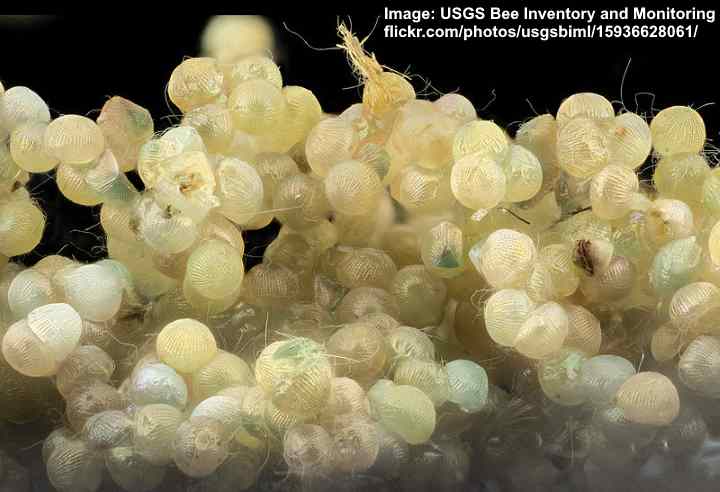
Fall armyworm eggs
The fall armyworm has a life cycle consisting of four stages. It starts as eggs laid on plant leaves. After two to three days, the larvae hatch and go through several growth stages (instars). During this stage that lasts about 14 days, they feed voraciously on vegetation, chewing grass and other soft plants. As with most caterpillars, about 80 percent of the total leaf consumption occurs in the last 2–3 days of the caterpillar stage. This is why fall armyworm damage can occur so quickly.
Next, mature larvae pupate in the soil for 1-2 weeks before emerging as adult moths. Mating occurs a few days after emergence, and females lay small, pale yellow eggs on host plants about 4 days after emergence. Female moths live for a couple of weeks and deposit around 1,500 eggs during their lifetimes.
Development from eggs to full-grown larvae often takes 2-3 weeks, and it takes about a month to complete a generation. Multiple generations occur each year. However, the development rate varies considerably depending on temperature and other factors.
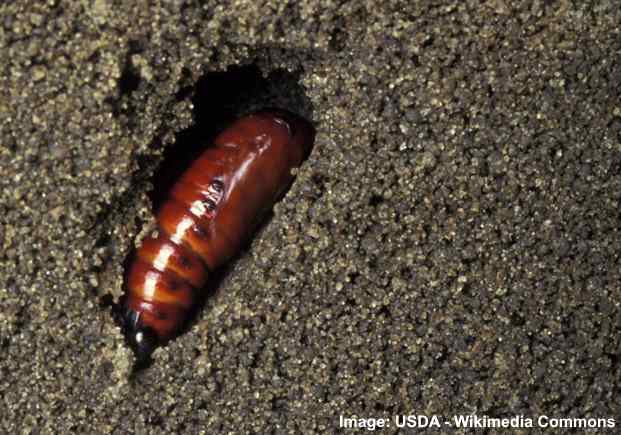
A fall armyworm pupa
The appearance of fall armyworms depends on the climate. For example, armyworms appear in New York and Minnesota in August. However, Kansas, South Carolina, and Louisiana may have up to four generations of armyworms per season. In some areas of Florida, the armyworms may be active throughout the winter.
Host Plants of the Fall Armyworm (Spodoptera frugiperda)
The fall armyworm has a very wide range of host plants, with a notable preference for grasses. However, it is also known to infest various field crops and vegetation. Some of its primary host plants include corn, sorghum, Bermudagrass, johnsongrass, and grass weeds like crabgrass and Digitaria spp.
During periods of high larval populations, the fall armyworm can cause significant damage to a wide variety of crops, including alfalfa, barley, buckwheat, cotton, clover, oats, millet, peanuts, rice, ryegrass, tall fescue, sugarbeets, sudangrass, soybeans, sugarcane, timothy, tobacco, and wheat.
Types of Armyworms
Fall Armyworm (Spodoptera frugiperda)
Fall armyworms commonly infest lawns nationwide, with Texas and Florida particularly affected. These worms grow 1.5” (28 mm) long. They have a pale brown color with dark side stripes and an inverted Y or V-shaped marking on their heads.
True Armyworm (Pseudaletia unipuncta)
True armyworms, also named common armyworms, have a greenish-brown body with white and orange stripes, and an orange, rounded head. The moth larvae grow up to 1.3” (35 mm). They are significant pests throughout the US, feeding on various weedy grasses and other crops.
Southern Armyworm (Spodoptera eridania)
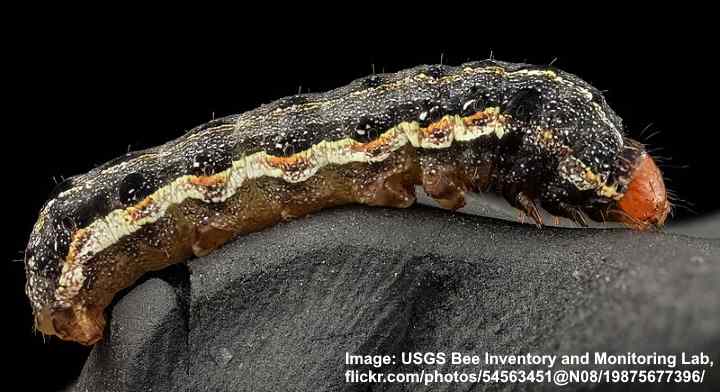
Southern armyworm (Spodoptera eridania)
The southern armyworm is a dark grayish-black caterpillar with yellowish or whitish stripes and dots found in California, Florida, Texas, and Kansas. It has a small orange head and measures 1.3” (35 mm) long. It damages crops by skeletonizing their leaves.
Beet Armyworm (Spodoptera exigua)
The invasive beet armyworm caterpillar is identified by its green body with a dark green band and thin yellow stripe along its sides. However, there is great color variation between the caterpillars as they mature. The cylindrical worm-like bugs grow 1.5” (38 mm) long. They feed on various crops throughout North America.
Fall Armyworm Range
Fall armyworms create lawn damage in the eastern and central US. They are more active and widespread in Florida, South Carolina, and Texas, where warm winters mean more generations. The destructive caterpillars are active from fall through winter. They feed on most turf and pasture grasses as well as ornamental grasses.
How to Identify Fall Armyworm
Identifying features of a fall armyworm caterpillar include its cylindrical body in a mottled brown color, dark longitudinal stripes, and yellowish lines. You will also notice a distinctive inverted “Y” or “V” shape on its head. Fall armyworms go through six instars, growing to 1.3” (35 mm) long.
Signs of Fall Armyworm Lawn Damage
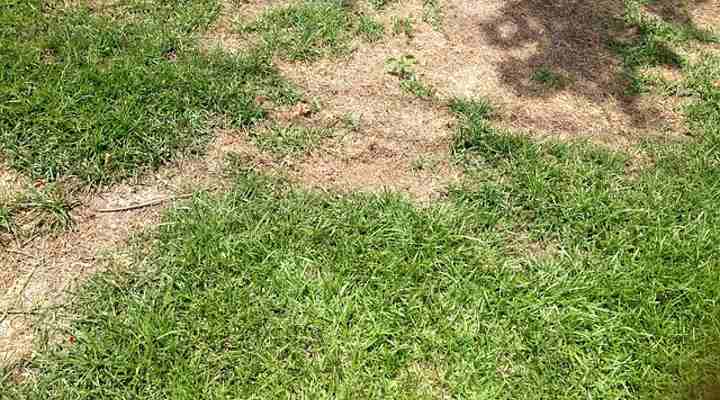
Fall armyworm lawn damage
Signs of fall armyworm lawn damage include irregular brown patches of grass with chewed or missing leaf blades. You may notice small green-black fecal pellets known as frass on the grass. Damage often appears suddenly, and the grass may look ragged or scalped due to the caterpillars’ feeding.
A distinctive feature of armyworm lawn damage is how the brown patches in grass appear. Armyworms “march” together, chewing grass blades and leaving destruction in their wake. Therefore, the damage usually radiates from where the female lays the eggs. Often, you will notice a distinctive line between undamaged and damaged turfgrass.
Other signs of fall armyworm damage include an unusually large number of birds on your lawn. Also, the damage may start at one side of the lawn and gradually move across it.
How to Get Rid of Fall Armyworms
The best way to eradicate armyworms from your lawn is to use Integrated Pest Management (IPM). This pest control method for controlling fall armyworms combines multiple methods—biological control, hand picking, chemical treatment, and cultural practices. This pest eradication method minimizes pesticide use, reducing environmental impact and pest resistance.
Here are several ways to eliminate fall armyworms from your lawn.
Early Detection of Fall Armyworms
Starting in late summer, regularly inspect your lawn for signs of fall armyworm damage. Signs of destructive caterpillar behavior include chewed leaves, ragged leaf edges, brown patches, and immature armyworms. Newly hatched armyworms look like greenish caterpillars with a large, rounded black head. You may also notice clusters of pale yellow eggs on foliage.
Detecting fall armyworms early in their life cycle allows for prompt action and minimizes damage. You can kill the pesky bugs by hand-picking or drowning them in warm, soapy water.
Mechanical Control of Fall Armyworms
Mechanical control refers to hand-picking armyworms and dropping them in a bucket of hot, soapy water. Vigilance is necessary because female armyworms can lay thousands of eggs during the season. This pest control method is useful for small infestations. However, it’s impractical for larger areas.
You can safely pick armyworms up with your hands. They don’t bite, sting, or transmit diseases. Use a damp paper towel to clean the foliage if you find clusters of yellowish eggs covered in a cotton wool-like substance.
Bacillus thuringiensis (Bt) to Kill Fall Armyworms
Bacillus thuringiensis (Bt) is a naturally occurring soil bacteria that can kill lawn pests like armyworms. After treating lawn grass and soil, the toxins kill caterpillars and insects that eat plants treated with it. It doesn’t harm humans or animals, making it perfect for natural pest control in gardens.
According to researchers, Bt dissolves the intestines of pests like armyworms. However, in some cases, armyworms can develop resistance to Bacillus thuringiensis. Therefore, integrated pest management strategies are vital to protect your lawn’s health.
To use Bt effectively in fall armyworm control, follow the manufacturer’s instructions to mix the solution. Apply it to your lawn early in the morning or evening, as sunlight can affect its effectiveness. Reapply weekly until you no longer have armyworms in your lawn.
Neem Oil to Control Fall Armyworms
Use a neem oil solution as a natural pesticide to kill fall armyworms. Neem oil is effective in pest control because it contains a compound called azadirachtin. This disrupts the caterpillars’ digestive and reproductive systems. A few applications should be enough to wipe out armyworm populations from lawns.
Research suggests that neem extracts are an effective natural control method for fall armyworms (FAW). Researchers found that applying a solution containing neem seed oil extract resulted in 45.5 percent mortality of fall armyworms after 12 hours. Researchers concluded that “neem insecticides are relatively non-toxic to mammals, environmentally friendly, and highly effective in causing FAW larval mortality.”
To use neem oil to kill armyworms, make a DIY insecticide using two teaspoons of neem oil and one teaspoon of insecticidal soap mixed with a gallon (3.8 l) of water. Spray the solution on lawns twice weekly to kill armyworms and prevent them from returning.
Soap and Water to Control Fall Armyworms
Soapy water can help eradicate fall armyworms from lawns and restore your lawn to its former glory. Soap and water help to kill armyworms in two ways. First, the soapy solution suffocates the pesky bugs. Second, the fatty acids in the liquid help to break down the caterpillar’s soft body, speeding up its death.
Here is a simple recipe to create a soap-based watering solution to kill armyworms:
- Mix two tablespoons of liquid dishwashing soap to 2 gallons (7.5 l) of water.
- Use the solution to thoroughly drench one square yard (0.8 sqm) of the affected lawn area until bubbles appear.
- After 10 minutes, the armyworm caterpillars will appear, and you can hand-pick them and drop them in hot soapy water.
Beneficial Nematodes
Beneficial nematodes are useful in natural biocontrol methods to protect lawn health. They are tiny worm-like organisms that kill leaf-feeding caterpillars like armyworms. The nematodes enter the caterpillar’s body and release bacteria that kill larvae within 48 hours.
According to research, beneficial nematodes can also help to repel fall armyworm larvae from lawns. Therefore, a solution containing nematodes can also help prevent armyworms in susceptible lawns. And unlike chemical pesticides, they do not negatively impact other living organisms in your garden’s ecosystem.
Spinosad
Spinosad is a natural insecticide derived from a soil bacterium. It is an organic, eco-friendly pesticide used to control a wide range of lawn pests, including armyworms. Spinosad targets the worms’ nervous systems, causing paralysis and death. It is considered safe for humans, pets, and beneficial insects.
Spinosad is available in various formulations, including sprays, granules, and powders for use on lawns. Some studies suggest that Spinosad is almost as effective as chemical insecticides in killing fall armyworms.
To use Spinosad for fall armyworm control, choose a product designed for fall armyworms. It’s also crucial to use the recommended concentrations for the type of lawn bug infestation you have. After mixing the Spinosad with water, thoroughly spray the affected lawn area to drench the soil. Repeat every seven days for the best results.
Maintain a Healthy Lawn to Help Prevent Fall Armyworms
Maintaining a healthy lawn is crucial for preventing and managing fall armyworm infestations. Vigorous grass growth and thick turf create an inhospitable environment for lawn grubs and caterpillars. Therefore, regular mowing, proper watering, and balanced fertilization create a strong, lush turf less attractive to pests like fall armyworms.
Healthy lawns also support beneficial organisms, fostering a natural balance that deters pest populations.
Here are several ways to keep your lawn lush, green, and healthy, free from plant-destroying armyworms:
Regular mowing: Maintain the lawn grass at 2.5” to 3.5” (6.3 – 9 cm) long. This encourages armyworms to feed on the longer grass blades, making them easier to spot and hand-pick. Short turfgrass encourages the larvae to stay deep in the turf, making detection more challenging.
Proper Watering: Water deeply and infrequently rather than shallow, frequent watering. Ensure the lawn receives around 1” to 1.5” (2.5 – 3.8 cm) of water weekly, including rainfall. If you are battling an armyworm infestation, watering the lawn weekly with a neem oil solution can help eliminate fall armyworms.
Adequate fertilization: Conduct a soil test to ensure the turf has enough nutrient needs. All lawns benefit from organic fertilizers. The best fertilizers for lawns should have an NPK ratio of 20-5-10. Apply a balanced, slow-release fertilizer according to the test results and local recommendations.
Thatch control: It’s vital to regularly dethatch your lawn to maintain a healthy, pest-free lawn. Thatch buildup—clippings and debris on the soil level—creates an environment for adult armyworm moths to lay eggs. Therefore, annual dethatching helps to make your lawn less inviting to lawn-damaging pests.
Aerate the soil: Aerate the soil to improve root development, water penetration, and air circulation. This also prevents soil compaction, allowing roots to develop and absorb nutrients from the soil.
Choose armyworm-resistant grass varieties: When reseeding or planting a new lawn, select grass varieties resistant to armyworms. Some turf varieties contain natural fungi that prevent armyworms from invading lawns.
Attract Beneficial Insects
Beneficial insects can help in your battle against annoying fall armyworms. Insects like ladybugs, lacewings, and pirate bugs feed on armyworm eggs. Also, parasitic wasps lay eggs inside armyworm bodies, killing them from the inside. The good news is that these insects also increase biodiversity in your garden, benefiting all your plants, shrubs, and vegetation.
Insecticides to Control Fall Armyworms
Sometimes, a severe fall armyworm infestation requires chemicals and insecticides to get rid of them. There are several active ingredients that are effective in controlling fall armyworms. However, pesticides on lawns should be a last resort due to their environmental impact. Some insecticides for armyworm control are moderately toxic to humans and pets. They can also kill beneficial insects.
Insecticide applications to control fall armyworm are most effective when the caterpillars are small, typically measuring less than ½ inch in length.
How to Prevent Fall Armyworms
Armyworms can be a major problem in lawns. Therefore, preventing female moths from laying eggs can help ensure the grass-munching pests don’t take over your garden.
Here are a few helpful tips on ensuring you don’t have to deal with a severe armyworm infestation:
- Keep turfgrass healthy by watering it and fertilizing it regularly.
- Install bird feeders as they are natural armyworm predators
- Water your lawn in late summer and early fall with a solution containing nematodes
- Scout lawns regularly from late summer onward to check for armyworm infestations.
Related articles:
